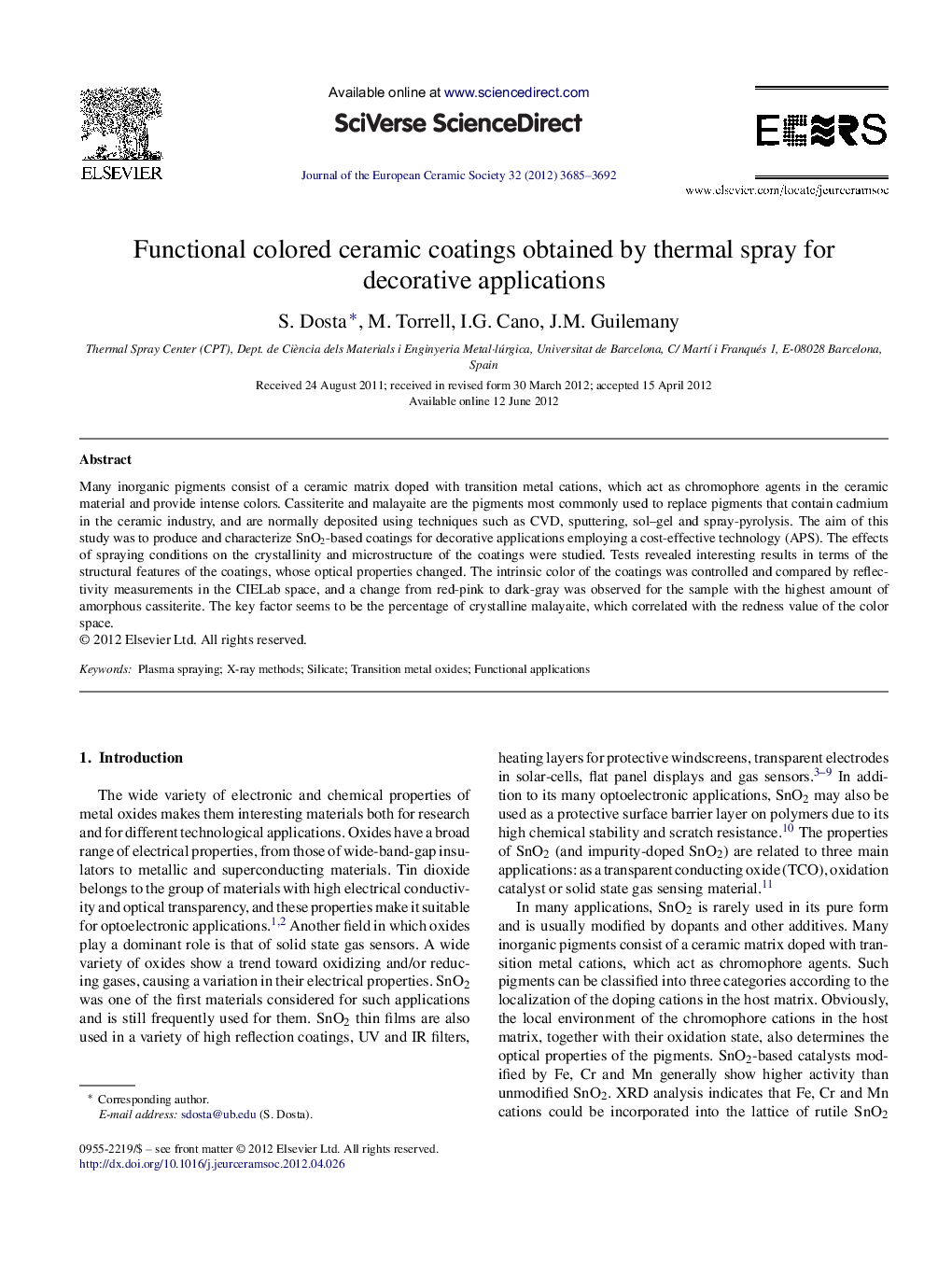| Article ID | Journal | Published Year | Pages | File Type |
|---|---|---|---|---|
| 1474867 | Journal of the European Ceramic Society | 2012 | 8 Pages |
Many inorganic pigments consist of a ceramic matrix doped with transition metal cations, which act as chromophore agents in the ceramic material and provide intense colors. Cassiterite and malayaite are the pigments most commonly used to replace pigments that contain cadmium in the ceramic industry, and are normally deposited using techniques such as CVD, sputtering, sol–gel and spray-pyrolysis. The aim of this study was to produce and characterize SnO2-based coatings for decorative applications employing a cost-effective technology (APS). The effects of spraying conditions on the crystallinity and microstructure of the coatings were studied. Tests revealed interesting results in terms of the structural features of the coatings, whose optical properties changed. The intrinsic color of the coatings was controlled and compared by reflectivity measurements in the CIELab space, and a change from red-pink to dark-gray was observed for the sample with the highest amount of amorphous cassiterite. The key factor seems to be the percentage of crystalline malayaite, which correlated with the redness value of the color space.
